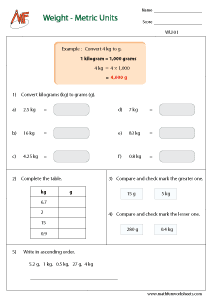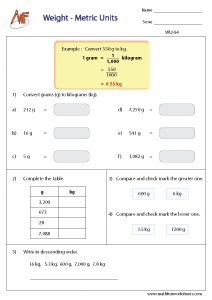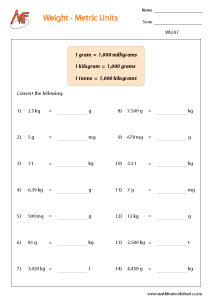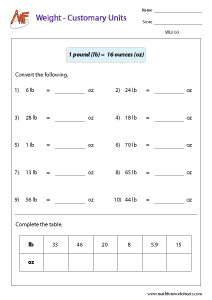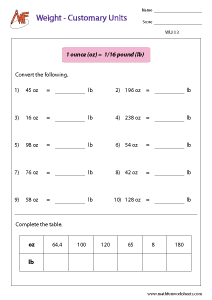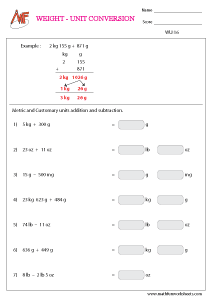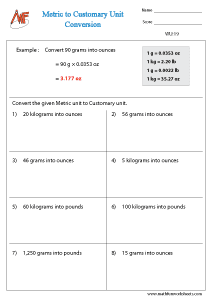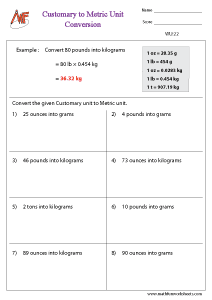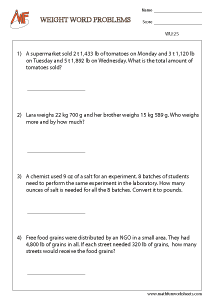- Home
- Measurement
- Weight - Unit COnversion
Browse by Topics
- English Worksheets
- Science Worksheets
- Kid's Corner
- Numbers & Operations
- Addition
- Subtraction
- Multiplication
- Division
- Decimals
- Place Value
- Roman Numerals
- Skip Counting
- Odd & Even Numbers
- Patterns
- Cardinal & Ordinal Numbers
- Rounding Numbers
- Estimation of Numbers
- Estimation of Time & Money
- Counting & Cardinality
- Comparing Numbers
- Ordering Numbers
- Fractions
- Prime & Composite Numbers
- Squares & Cubes
- Square & Cube Root
- Divisibility Rules
- Factors & Multiples
- Data Handling
- Algebra
- Ratio
- Least Common Factor
- Greatest Common Factor
- Percent Worksheets
- Proportion
- Order of Operations
- Scientific Notation
- Exponents
- Algebraic Expressions
- Evaluating Algebraic Expressions
- Simplifying Algebraic Expressions
- Graphing Lines
- Point Slope Form
- Two Point Form
- Two Intercept Form
- Equations
- Identifying Functions
- Evaluating Functions
- Function Table
- Domain and Range
- Trigonometric Charts
- Quadrants
- Polynomials
- Measurement
- Geometry
- Word Problems
Weight - Unit Conversion Worksheets
Weight – metric and customary units worksheets help students understand and convert between different systems of measurement. These worksheets are great for practicing how weight is measured around the world. In the metric system, weight is measured in grams and kilograms. In the customary system, people use ounces and pounds. Learning to switch between these units is a key skill in math and everyday life. Reading weight from digital, analog and balance scales would have taught you the various Metric units and Customary units.
First, students learn how to identify the correct unit for an object’s weight. For example, a feather weighs in grams, while a suitcase is measured in kilograms or pounds. Then, they practice simple conversions. For instance, 1 kilogram equals about 2.2 pounds. These activities help students build confidence and speed. As a result, they become more comfortable with real-world measurements.
The metric measures of mass used in these worksheets are: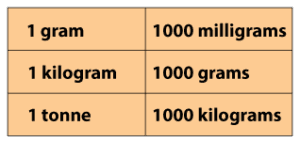
Most commonly used US Customary measures of mass or weight are:
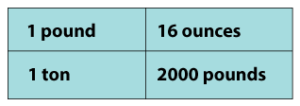
Once you are familiar with the conversion tables given above, converting units to other measures becomes cakewalk. Exclusive charts are aslo provided along with practice worksheets. Interesting word problems make you understand that one unit of measurement cannot be used to measure another unit. Measures of length, capacity, weight, temperature are all different.
All the worksheets here are available in PDF format and are free to download.
Weight - Unit Conversion Worksheets
Metric unit conversion (g, kg, mg)

Metric unit conversion (g, kg, mg)
Add / Subtract (Metric & Customary units)

Add / Subtract (Metric & Customary units)
Metric to Customary unit conversion

Metric to Customary unit conversion
Customary to Metric unit conversion

Customary to Metric unit conversion
Next, the worksheets offer a variety of problems. Some ask for matching units, while others include word problems. These exercises boost critical thinking. Moreover, they allow students to apply math to daily tasks like cooking or shopping. Teachers can also use these worksheets for review or homework.
In addition, the worksheets often include charts and tables. These tools make conversions easier to understand. Students can quickly look up values and check their answers. With continued practice, they will master both systems.
To sum up, using these worksheets improves math skills. They help students become familiar with different systems used around the world. With short, fun exercises, learners gain the confidence to solve any weight-related problem. Whether in the classroom or at home, these worksheets are an excellent tool for building strong measurement skills.

